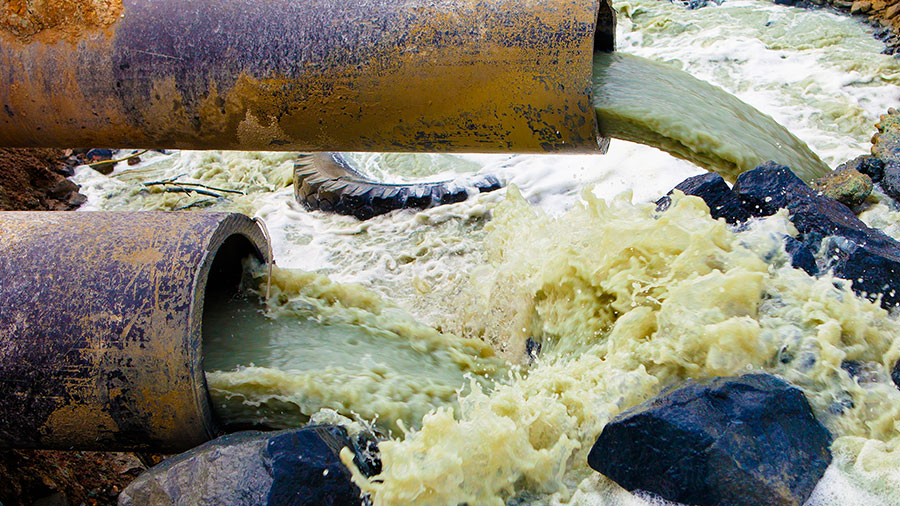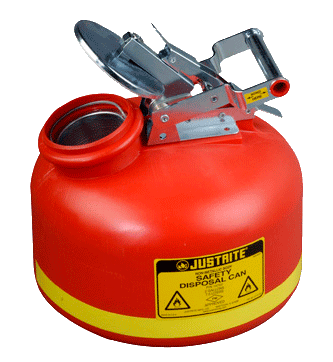Industrial Wastewater Treatment: Advanced Techniques for Effective Monitoring
How Liquid Waste Disposal Works: A Comprehensive Introduction of Strategies and Technologies Utilized

Review of Fluid Waste Kind
The intricacy of fluid waste kinds necessitates a thorough understanding of their characteristics and implications for disposal. Liquid waste can extensively be categorized into a number of kinds, consisting of commercial, metropolitan, farming, and contaminated materials. Each classification shows distinct homes, requiring certain monitoring strategies to alleviate ecological and health and wellness threats.
Industrial liquid waste originates from making procedures and commonly includes a variety of impurities, such as hefty metals, solvents, and natural substances. Local fluid waste, largely making up wastewater from families and industrial establishments, contains natural issue, nutrients, and microorganisms (industrial wastewater treatment). Agricultural liquid waste, consisting of drainage from farms, may contain fertilizers, pesticides, and pet waste, presenting risks to water high quality and environments
Dangerous liquid waste is defined by its poisoning, sensitivity, or prospective to create harm. This classification includes compounds like acids, bases, and certain chemicals that require rigorous handling and disposal methods. Understanding these varied liquid waste types is vital for developing efficient disposal methods and guaranteeing conformity with environmental guidelines. Correct classification and characterization are essential for applying ideal treatment strategies and lessening the adverse influence on public wellness and the setting.
Physical Therapy Techniques

Screening is the preliminary action, where bigger bits and debris are gotten rid of from the fluid waste using screens or grates. In sedimentation storage tanks, heavier fragments work out at the bottom, forming a sludge layer, while the cleared up fluid can be more treated.
Filtering is another essential approach that entails passing the fluid through permeable materials, such as sand or membrane layers, to record smaller sized particles. This action boosts the high quality of the fluid, making it appropriate for succeeding therapy procedures.

Chemical Therapy Methods
Chemical treatment techniques are necessary for successfully managing fluid waste, especially in attending to dissolved and colloidal contaminants that physical techniques might not adequately remove. These strategies use various chemical representatives to reduce the effects of, precipitate, or transform harmful materials right into much less damaging forms.
One common approach is coagulation and flocculation, where chemicals such as alum or ferric chloride are added to advertise the gathering of suspended particles. This process enhances sedimentation, allowing for less complicated elimination of the resulting sludge. In addition, oxidation processes, utilizing agents like chlorine or ozone, are utilized to damage down complex organic compounds and pathogens, rendering the waste safer for discharge or additional treatment.
Neutralization is one more important method, which readjusts the pH of acidic or alkaline waste streams to neutral levels, protecting against possible harm to downstream systems and the environment. Additionally, progressed oxidation processes (AOPs) utilize mixes of oxidants and ultraviolet light to break down consistent toxins, attaining a higher level of therapy performance.
Biological Therapy Processes
Organic therapy procedures play a critical function in the administration of fluid waste by using microbes to decay raw material and reduce contaminant levels. These processes can be extensively categorized into anaerobic and cardio treatments, each employing particular microbial neighborhoods to achieve efficient waste degradation.
Cardiovascular therapy entails making use of oxygen to help with the break down of natural products by bacteria. This process is generally applied in activated sludge systems, where oygenation tanks supply a favorable environment for microbial growth, leading to the oxidation of natural contaminants. The resultant biomass can be divided from dealt with effluent via sedimentation.
On the other hand, anaerobic treatment happens in the lack of oxygen, relying upon various microorganisms to damage down natural issue. imp source This method is specifically useful for high-strength waste, as it creates biogas, a renewable resource resource, while reducing sludge manufacturing. Technologies such as anaerobic digesters are often utilized in industrial and local applications.
Both anaerobic and cardio biological therapies not just lessen the environmental influence of fluid waste however additionally assist in resource healing, making them vital components of sustainable waste management methods. Their adaptability, performance, and effectiveness sustain their extensive implementation across various fields.
Emerging Technologies in Disposal
Ingenious approaches to liquid garbage disposal are quickly advancing, driven by developments in innovation and an enhancing focus on sustainability. Among these emerging technologies, membrane bioreactors (MBRs) have actually gained traction for their capability to integrate organic treatment with membrane purification, leading to high-grade effluent that can be reused in numerous applications. MBRs allow smaller impacts and much more effective procedures compared to typical systems.
One more appealing development is using anaerobic digestion combined with nutrient recovery modern technologies, which not just deals with liquid waste yet additionally creates biogas and recovers valuable nutrients like nitrogen and phosphorus. This dual benefit improves resource efficiency and minimizes environmental influence.
Furthermore, advanced oxidation procedures (AOPs) are being embraced for the degradation of intricate organic toxins. These techniques make use of powerful oxidants and stimulants to damage down pollutants at the molecular level, supplying an extremely reliable solution for challenging waste streams.
Furthermore, the integration of expert system and artificial intelligence in waste monitoring systems is enhancing operational efficiency and predictive upkeep, resulting in decreased expenses and improved environmental conformity. These technologies mirror a significant change in the direction of even more reliable and lasting fluid garbage disposal see here methods.
Verdict
Finally, effective fluid garbage disposal necessitates an extensive understanding of numerous methods and technologies. The combination of physical, chemical, and organic treatment approaches makes sure the reliable management of diverse waste types. Additionally, the appearance of cutting-edge technologies enhances treatment efficiency and advertises sustainability in waste administration techniques. By constantly advancing these methods, it becomes possible to resolve the expanding challenges related to liquid waste, ultimately adding to environmental security and source recuperation.
Liquid waste disposal is a vital aspect of ecological monitoring, requiring a thorough understanding of numerous strategies and innovations customized to various waste kinds. Liquid waste can generally be classified into a number of types, consisting of industrial, local, farming, and dangerous waste. Agricultural have a peek at this site liquid waste, including drainage from farms, may have fertilizers, chemicals, and pet waste, posing threats to water quality and communities.
Various physical therapy approaches play a critical function in managing liquid waste efficiently - industrial wastewater treatment.In final thought, reliable fluid waste disposal necessitates an extensive understanding of different methods and modern technologies